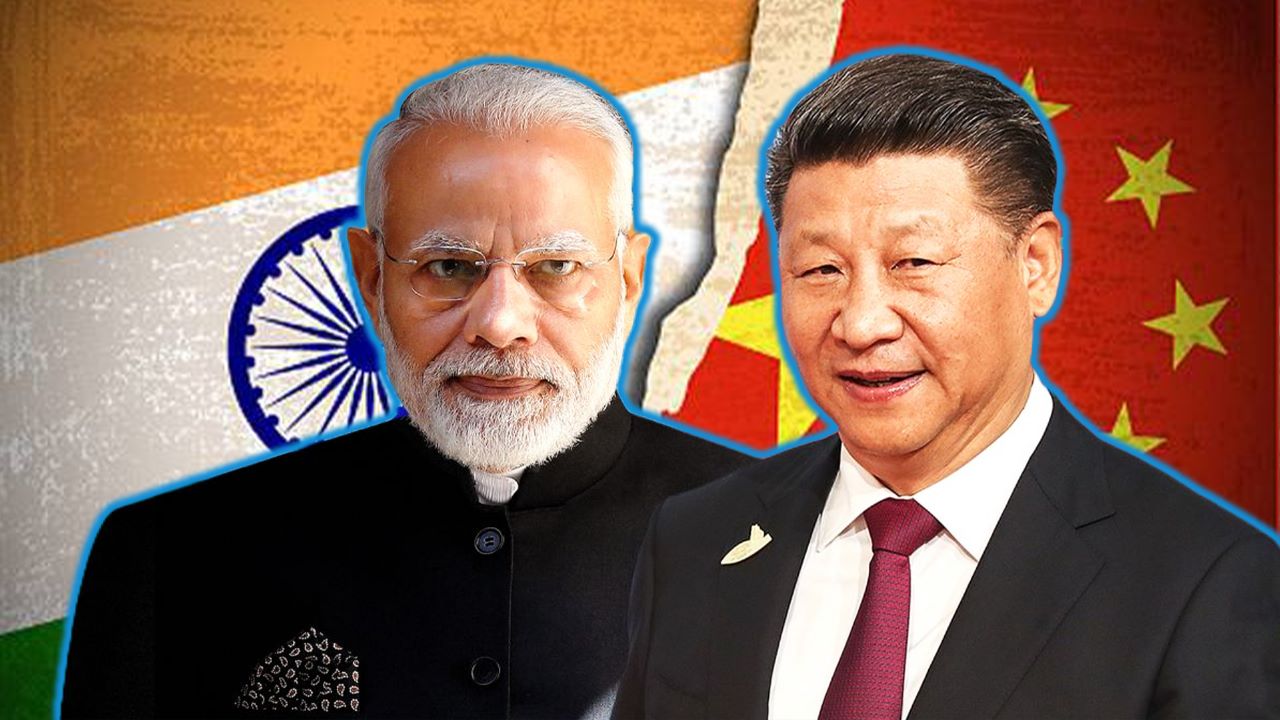OPED By Dr. Imran Khurshid
China’s outreach to India signals cautious optimism and potential cooperation, but border disputes and support for Pakistan remain challenges. The coming months will show if it becomes a true partnership or mere diplomacy.
In recent weeks, China has launched an all-out outreach campaign towards India. Its state-controlled media, including the Global Times and other outlets, have published a series of India-centric articles aimed at appealing to the Indian leadership, strategic community, and the wider public.
For instance, a recent Global Times commentary article titled “China-India cooperation could deliver tangible benefits to the broader Global South,” stressed that cooperation between the two sides could enhance regional connectivity and reduce trade costs.
The tone from Beijing has been unusually positive, with statements from Chinese leaders—including Foreign Minister Wang Yi, who recently visited New Delhi for the 24th round of border talks and met India’s National Security Adviser—emphasizing cooperation, trust-building, and regional stability.
As a confidence-building measure, China has lifted restrictions on rare earth magnets and other critical materials for India, while also addressing concerns related to fertilizers and tunnel boring machines.
Both sides further agreed to resume direct flights, reopen border trade through Himalayan crossings, restore journalist visas, and expand people-to-people exchanges—practical steps that reflect a thaw in ties.
Beijing has also extended a formal invitation to Prime Minister Narendra Modi to visit China for the upcoming SCO Summit in Tianjin, which Modi has accepted. Following his meeting with Wang Yi, Modi noted on X:
“Glad to meet Foreign Minister Wang Yi. Since my meeting with President Xi in Kazan last year, India-China relations have made steady progress guided by respect for each other’s interests and sensitivities. I look forward to our next meeting in Tianjin on the sidelines of the SCO Summit. Stable, predictable, constructive ties between India and China will contribute significantly to regional as well as global peace and prosperity.”
This language signals cautious optimism from New Delhi, but India remains acutely aware of the underlying contradictions in Beijing’s approach.
Compartmentalization & Cooperation
Chinese media have been strongly urging both India and China to “take a fragmented view of the relationship,” encouraging a focus on areas of convergence while setting aside disputes.
Chinese geopolitical analysts suggest that the two nations can build mutual trust and strategic confidence, foster South–South solidarity, and align connectivity initiatives such as the Belt and Road Initiative (BRI) and India’s Act East Policy.
They argue that if harmonized, these efforts could unlock supply chains, reduce trade costs, and embed South Asia more deeply into pan-Asian networks.
Beijing’s narratives also emphasize that, despite the 2020 border clashes, more than twenty rounds of commander-level talks have established buffer zones and disengagement frameworks. At the same time, bilateral trade has surged to record highs, underscoring the depth of economic interdependence.
Commentators further contend that both countries share converging interests in shaping a multipolar world order through platforms like BRICS and the Shanghai Cooperation Organisation (SCO), thereby making sustained hostility less viable.
As one Global Times analyst recently observed: “India supports China in successfully hosting the SCO Summit and is ready to steadily build conditions for the final settlement of the boundary question. Strategic communication on border affairs is crucial to stabilizing ties.”
This reflects Beijing’s message that, through forums like BRICS and the SCO, China and India could jointly promote multipolarity and resist hegemonic dominance.
At the same time, China is keen to ensure Prime Minister Modi’s participation in the SCO Summit and wants the event to be a success. Much like it used the 2008 Olympics as a platform for power projection, Beijing now sees the SCO as an opportunity to present itself as an influential and stable actor on the international stage.
This outreach, therefore, also reflects China’s desire to showcase itself as a competent and successful host at a time when global alignments are shifting rapidly, and the international system is marked by greater instability, fragmentation, and uncertainty.

Contradictions In Beijing’s Approach
Yet, despite the rhetoric, India has reasons to remain skeptical. Beijing continues to support Pakistan diplomatically, economically, and militarily—even during the recent Operation Sindoor, where Chinese assistance emboldened Islamabad against India.
This dual-track policy undermines China’s own claims of wanting to build trust with India.
If Beijing is sincere about a long-term partnership, it must “walk the talk.” That begins with settling the boundary question. China has resolved its land borders with most of its neighbours but has deliberately left its frontier with India unsettled, preserving it as a geopolitical lever.
Moreover, Beijing’s insistence on compartmentalizing issues—separating border disputes from trade or multilateral cooperation—reflects a tactical, not strategic, vision. For India, true normalization cannot occur until core sovereignty concerns are addressed.
This challenge is further compounded by China’s unwavering support for Pakistan, which remains a persistent stumbling block in India-China relations. Moreover, China must understand that Islamabad’s strategic loyalties are contingent and have historically shifted with external patronage, as seen recently in its rare earth mineral deal with U.S. President Donald Trump—a move that increasingly undermines its own investments and the sacrifices it has made in Balochistan.
China has invested heavily in Balochistan, yet Pakistan now appears ready to hand it over to the United States. By prioritizing Pakistan over India, Beijing risks undermining a potentially transformative partnership with a far more stable and globally significant neighbour.
It is in the interest of China and of the region as a whole that India and China work together. Both are civilizational states with long histories, deep economic ties, and important roles to play as partners in RIC and BRICS.
India and China share far greater interests and have much more in common than China and Pakistan ever could. If Beijing is truly pragmatic and serious about mending ties, it must walk the talk.
Such a shift would not only benefit China and India but also contribute to stability and prosperity across the entire region, especially at a time when the geopolitical winds are shifting rapidly in this part of the world.
Moreover, India is no longer a peripheral player. It is an important country with significant geopolitical weight, and alignment—or non-alignment—with it carries profound consequences for any state. India is the leading voice of the Global South and a key actor in shaping multipolarity. Spoiling ties with New Delhi for the sake of Islamabad is not sound geopolitics for Beijing.
An Opportunity For Course Correction
Furthermore, China’s strategic outreach can be seen as a course correction and a signal in response to the strong backlash from India after it openly sided with Pakistan during Operation Sindoor.
With the U.S. recently imposing tariffs on India and trust in the India–U.S. relationship showing signs of strain, the current geopolitical moment bears some resemblance to the early 1970s, when Beijing pragmatically tilted toward Washington.
If Beijing is serious at this moment, it has a unique opportunity to engage India constructively by addressing its core national security sensitivities and strategic concerns, potentially resetting and strengthening the bilateral relationship in its favour.
For China, the stakes are high. If it is genuinely pragmatic and committed to its rhetoric of cooperation, it should adopt a problem-solving approach by:
Resolving the boundary dispute rather than leaving it as a perpetual flashpoint.
Reconsidering its unconditional support for Pakistan, given the volatility and transactional nature of Islamabad’s policies.
Deepening trade and investment ties with New Delhi, which offers a far more stable and significant market, while also addressing the trade imbalance by granting India greater access to its domestic markets.
Building joint initiatives in BRICS, SCO, and RIC (Russia-India-China) formats to strengthen multipolarity and Global South solidarity.
Conclusion
India and China are both civilizational states with enormous potential to reshape the regional and global order. They are already deeply intertwined in trade, multilateral forums, and global governance debates. Working together, they can be powerful advocates for the Global South and counterbalances to hegemonic forces.
But goodwill cannot be built on selective rhetoric. For trust to emerge, Beijing must match words with deeds—by settling the boundary question, moderating its Pakistan policy, and engaging India as an equal partner.
If China seizes this moment with sincerity, it could pave the way for a historic partnership with India. If not, its outreach will remain little more than diplomatic theatre.
- Dr. Imran Khurshid is an Associate Research Fellow at the International Centre for Peace Studies (ICPS), New Delhi. He specializes in India-US relations, Indo-Pacific studies, and South Asian security issues.
- VIEWS PERSONAL OF THE AUTHOR




